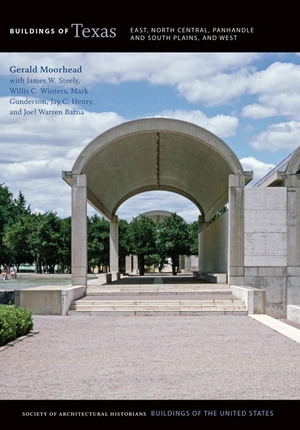
Nationally, the Work Progress Administration (WPA) was responsible for over 2,300 stadiums, including this high school facility known as the Tomato Bowl (named for the area’s primary vegetable export). The stadium is shaped by a grassy embankment that was formed to provide spectator seating in a recessed bowl configuration, formed by hand labor out of an existing hillside, the site of the then recently demolished school. Using the school’s foundations, the field house spreads across the top of the hill, facing downtown to the west and forming the base against which the seating is structured on the hillside to the east. The two-story central block has a triple-arched entrance and a pyramidal roof. One-story wings extend to each side. The field house and an enclosing wall were constructed of random-sized, red iron ore rocks collected from area farms. A broad flight of stairs and the field house beyond terminate the visual axis to downtown along E. Commerce Street.

